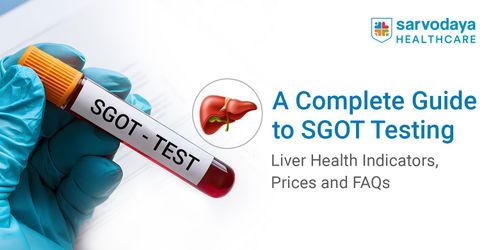Cancer remains one of the most challenging health concerns of our time, and its successful treatment begins with accurate diagnosis. One of the most reliable diagnostic methods is the biopsy test for cancer, a test that allows doctors to examine tissue samples under a microscope to detect abnormalities. Despite its importance, many patients still feel uncertain and often ask whether a biopsy is safe or whether it might lead to further complications.
In this blog, we explain what a biopsy test is, the step-by-step process of a biopsy, its safety for cancer patients, possible biopsy side effects, and why it is considered the gold standard for cancer diagnosis.
Understanding Biopsy Tests
A biopsy test for cancer is a medical procedure in which a small sample of tissue is removed from the body for laboratory analysis. This test helps in confirming whether a lump, growth, or abnormal cell structure is cancerous or benign. Unlike imaging tests, such as CT scans or MRIs, which only show abnormalities, a biopsy provides a definitive diagnosis.
There are different types of biopsies performed depending on the suspected cancer site and the condition of the patient.
Some of the most common include:
- Needle Biopsy: A thin needle is used to extract tissue or fluid from the suspicious area.
- Surgical Biopsy: A part of or the entire suspicious growth is surgically removed.
- Endoscopic Biopsy: An endoscope equipped with a camera is used to access internal organs and collect tissue samples.
- Skin Biopsy: A small portion of skin tissue is removed for analysis.
Process for Biopsy
Biopsy varies depending on the type of cancer being investigated, but the goal is always to remove a small sample of tissue for microscopic examination. It is usually a short and minimally invasive process that can be done under local or general anaesthesia, depending on the case.
The general steps in the process include:
- The doctor identifies the area of concern using imaging techniques such as ultrasound, X-ray, CT scan, or MRI.
- The site is cleaned, and, in most cases, a local anaesthetic is administered to numb the area.
- A special instrument, such as a needle or surgical tool, is used to remove the tissue sample.
- The sample is sent to a laboratory, where a pathologist examines it under a microscope for signs of cancer.
Safety of Biopsy for Cancer Patients
A common concern among patients is whether undergoing a biopsy test for cancer is safe. Medical experts widely agree that a biopsy is a safe and standard diagnostic procedure used globally. The fear that a biopsy can cause cancer to spread is a myth, as research has consistently shown that this is not the case. While there may be minor side effects from biopsies, such as mild pain, bruising, or bleeding at the site, these are typically temporary and usually resolve quickly with proper care.
The benefits of a biopsy far outweigh the risks, as it provides doctors with critical information about the type, grade, and stage of cancer. Patients who undergo a biopsy are therefore better equipped to receive timely and accurate treatment, which can significantly improve outcomes.
Biopsy Side Effects and Risks
Like any medical procedure, a biopsy test for cancer may involve some side effects, though most are minor and temporary.
Some of the most common biopsy side effects include:
- Mild pain or soreness at the biopsy site
- Bruising or swelling
- Slight bleeding immediately after the biopsy
- Localised infection in rare cases
In very few situations, depending on the biopsy site, complications such as damage to nearby tissues or delayed healing may occur. These risks are significantly minimised when the biopsy is performed at a renowned cancer hospital in Delhi NCR, where advanced technology and strict safety protocols are followed.
Benefits of a Biopsy Test for Cancer
Despite the concerns about safety and side effects, the advantages of a biopsy are undeniable.
Some of the key benefits include:
- Accurate Diagnosis: A biopsy is the only test that can confirm if abnormal cells are cancerous.
- Treatment Planning: Results guide the doctor in creating a personalised treatment plan.
- Staging Cancer: This helps determine the extent of cancer’s advancement, which influences therapy choices.
- Monitoring Progress: In some cases, follow-up biopsies help assess the effectiveness of treatment.
Best Cancer Hospital in Delhi NCR for Biopsy and Treatment
Choosing the right hospital is as important as the test itself. The success of a biopsy test for cancer depends not only on advanced technology but also on the expertise of the medical team. A reputable cancer hospital in Delhi NCR offers state-of-the-art diagnostic facilities, highly trained oncologists, and a patient-centred approach.
Working with an experienced cancer specialist in Delhi NCR ensures that the biopsy is carried out safely, results are interpreted accurately, and the proper treatment path is chosen. Hospitals equipped with modern laboratories and imaging support further enhance accuracy, reducing risks and ensuring peace of mind for patients and their families.
Conclusion
A biopsy test for cancer remains the most reliable and safe way to diagnose cancer. While minor side effects, such as soreness or bruising, may occur, the overall safety and diagnostic benefits make it a vital step in cancer care.
At Sarvodaya Hospital, Faridabad, patients have access to advanced diagnostic facilities, a team of highly skilled oncologists, and cutting-edge technology for precise and safe biopsies. The hospital also offers preventive consultations that can help detect cancer at an early stage, thereby improving treatment outcomes and quality of life.
If you or a loved one has been advised to undergo a biopsy, do not delay seeking expert care. Take the first step towards clarity and peace of mind by booking an appointment now with a trusted cancer specialist.



















